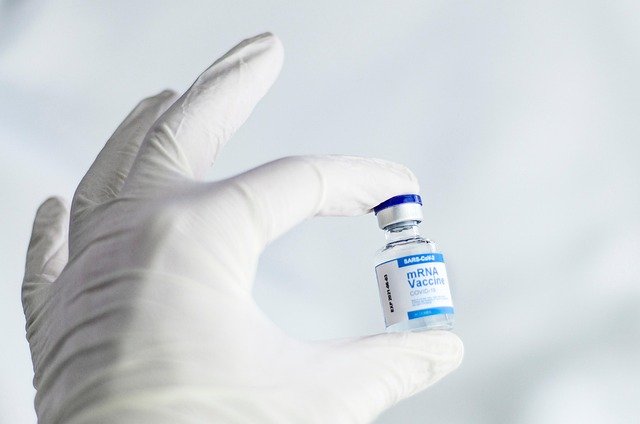Myelodysplastic Syndrome: Silent Signals You Shouldn’t Ignore
Myelodysplastic syndrome (MDS) often develops quietly with subtle signs that are easy to miss. From persistent fatigue to frequent infections and unexplained bruising, early recognition is key. This guide explains who is most at risk, the silent warning signals, and why seeking timely medical advice can make a critical difference.

What are the early signs of myelodysplastic syndrome?
Recognizing the early signs of myelodysplastic syndrome can be challenging, as they often develop slowly and may be subtle. Some of the initial symptoms to watch for include:
-
Fatigue and weakness: Persistent tiredness that doesn’t improve with rest is often one of the first noticeable signs of MDS.
-
Shortness of breath: Difficulty breathing, especially during physical activities, may occur due to a decrease in red blood cells.
-
Pale skin: A noticeable paleness of the skin can result from anemia, a common consequence of MDS.
-
Easy bruising or bleeding: Individuals with MDS may experience frequent nosebleeds, bleeding gums, or bruise easily due to low platelet counts.
-
Frequent infections: Recurrent or prolonged infections may indicate a weakened immune system caused by MDS.
It’s important to note that these symptoms can be associated with various other conditions, so consulting a healthcare professional for proper evaluation is essential.
What are the main MDS risk factors?
While the exact cause of myelodysplastic syndrome is not always clear, several risk factors have been identified:
-
Age: MDS is more common in older adults, with the risk increasing significantly after age 60.
-
Previous cancer treatment: Chemotherapy or radiation therapy for other cancers can increase the likelihood of developing MDS.
-
Exposure to certain chemicals: Long-term exposure to benzene, pesticides, or heavy metals may elevate the risk of MDS.
-
Genetic disorders: Certain inherited conditions, such as Fanconi anemia or Down syndrome, are associated with a higher risk of MDS.
-
Smoking: Tobacco use has been linked to an increased risk of developing MDS.
-
Gender: Men are slightly more likely to develop MDS than women.
Understanding these risk factors can help individuals and healthcare providers remain vigilant for potential signs of MDS, especially in high-risk populations.
How do myelodysplastic syndrome symptoms progress?
As myelodysplastic syndrome advances, symptoms may become more pronounced and affect daily life more significantly. The progression of symptoms can vary from person to person but may include:
-
Worsening anemia: Fatigue, weakness, and shortness of breath may become more severe.
-
Increased susceptibility to infections: As the immune system weakens, infections may become more frequent and harder to treat.
-
Bleeding complications: Easy bruising and bleeding may become more noticeable, potentially leading to more serious bleeding events.
-
Weight loss and loss of appetite: Some individuals may experience unexplained weight loss or a decrease in appetite.
-
Bone pain: In some cases, MDS can cause discomfort in the bones.
It’s crucial to monitor any changes in symptoms and report them to a healthcare provider for proper management and potential adjustments to treatment plans.
What causes anemia and frequent infections in MDS?
Anemia and frequent infections are common manifestations of myelodysplastic syndrome, both stemming from the underlying bone marrow dysfunction:
-
Anemia in MDS:
-
Caused by insufficient production of healthy red blood cells
-
Results in reduced oxygen-carrying capacity of the blood
-
Leads to fatigue, weakness, and shortness of breath
-
-
Frequent infections in MDS:
-
Result from inadequate production of white blood cells, particularly neutrophils
-
Compromises the body’s ability to fight off bacteria and other pathogens
-
Can lead to recurrent or prolonged infections, even from typically mild illnesses
-
The bone marrow’s inability to produce sufficient quantities of healthy blood cells is at the root of both these issues, highlighting the importance of addressing the underlying MDS for effective management of these symptoms.
How are MDS diagnosis and treatment approached?
Diagnosing and treating myelodysplastic syndrome involves a comprehensive approach:
Diagnosis:
-
Blood tests: Complete blood count to assess levels of different blood cells
-
Bone marrow biopsy: Examination of bone marrow samples for abnormal cells
-
Cytogenetic analysis: Study of chromosomal abnormalities in bone marrow cells
-
Flow cytometry: Evaluation of cell characteristics and markers
Treatment:
-
Supportive care: Blood transfusions, growth factors, and antibiotics as needed
-
Low-intensity chemotherapy: To slow disease progression in some cases
-
Hypomethylating agents: Medications that may improve blood cell production
-
Immunosuppressive therapy: For certain types of MDS
-
Stem cell transplantation: Potentially curative option for eligible patients
Treatment approaches are tailored to individual patient factors, including age, overall health, and specific MDS subtype. Regular monitoring and adjustments to the treatment plan are often necessary to manage symptoms and slow disease progression effectively.
In conclusion, recognizing the silent signals of myelodysplastic syndrome is crucial for early detection and management. By understanding the early signs, risk factors, and progression of symptoms, individuals can work closely with healthcare providers to navigate the challenges of MDS. While the condition can be complex, advancements in diagnosis and treatment offer hope for improved outcomes and quality of life for those affected by this blood disorder.
This article is for informational purposes only and should not be considered medical advice. Please consult a qualified healthcare professional for personalized guidance and treatment.




